Dining in Rome offers a delectable journey through Italy’s rich culinary heritage, but navigating the city’s vibrant food scene can be a bit daunting for first-time visitors. While the experience promises to be memorable, a few common pitfalls can turn a delightful meal into a regrettable misstep. From misunderstandings about local dining customs to overlooking key menu details, there are several mistakes that can detract from your Italian dining adventure.
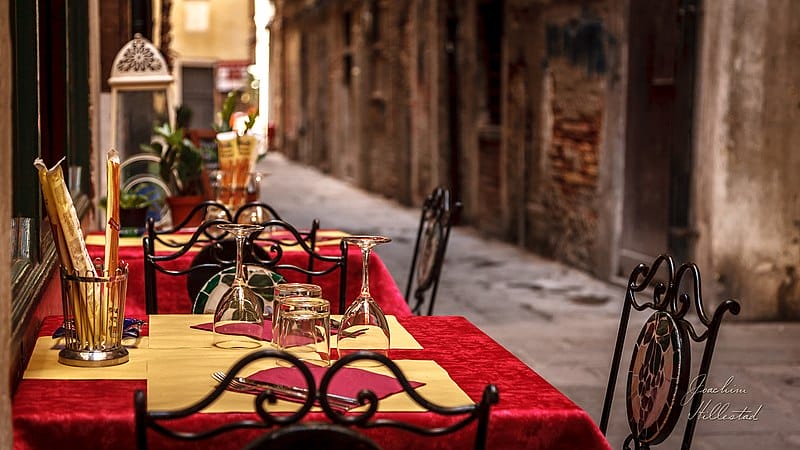
Source: Joachim Hillestad, CC BY 3.0 https://creativecommons.org/licenses/by/3.0, via Wikimedia Commons
Roman dining is not just about the food – it’s about embracing the culture and savoring each moment. With its unique meal structure, leisurely pace, and emphasis on local specialties, Rome’s dining scene requires a bit of local knowledge to fully appreciate. This guide aims to help you avoid some of the most frequent mistakes tourists make when ordering food in Rome, ensuring that your dining experience is as delightful and authentic as possible. By understanding and sidestepping these common errors, you’ll be better equipped to savor every bite and truly embrace the flavors of the Eternal City.
Key Takeaways
- Respect Local Customs: Understand and follow Rome’s dining customs, including the traditional meal structure with antipasti, primi, secondi, and dolci.
- Pasta as a Course: Order pasta as a primo (first course) rather than a side dish to align with Italian dining practices.
- Leisurely Dining: Don’t expect fast service. Embrace the relaxed pace of Italian dining.
- Menu Structure: Familiarize yourself with the typical Italian menu sections—antipasti, primi, secondi, and dolci.
- Seasonal Specialties: Ask about and try seasonal and local specialties for an authentic experience.
- Dining Hours: Stick to local dining hours: lunch from 1:00 PM to 3:00 PM and dinner from 8:00 PM onwards.
- Bread Expectations: Bread may not be served automatically and could be included in the coperto (cover charge).
Mistakes to Avoid When Ordering Food in Rome
Whether you’re trying to navigate the intricacies of Italian menus, deal with the relaxed pace of service, or understand the role of seasonal specialties, we can provide essential tips to enhance your culinary journey in the Eternal City. By sidestepping these common errors, you can focus on enjoying the vibrant flavors and rich traditions that make Roman dining truly special. Dining in Rome is a delightful experience.
Skipping the Aperitivo
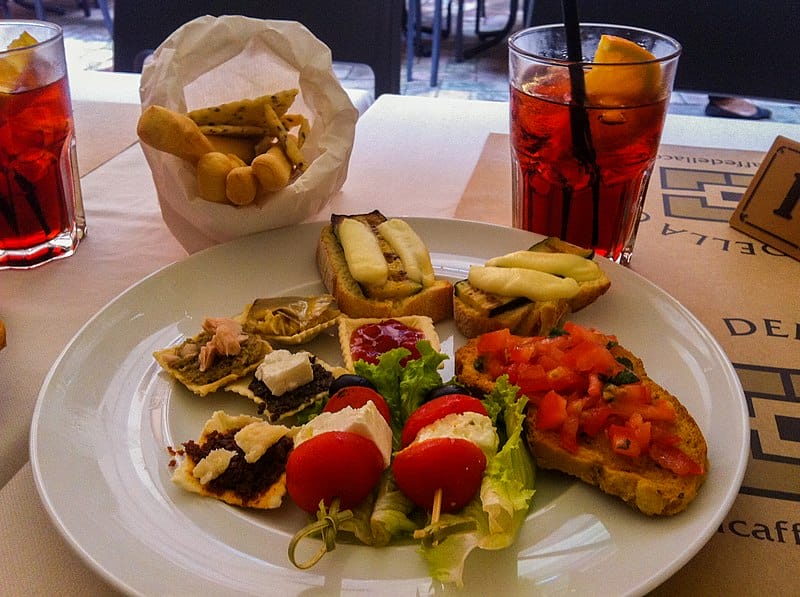
Source: Ralf Steinberger from Milan, Berlin + Munich, Italy + Germany, CC BY 2.0 https://creativecommons.org/licenses/by/2.0, via Wikimedia Commons
The term “aperitivo” derives from the Latin word “aperire,” meaning “to open,” and it reflects its role in opening up the evening. This pre-dinner tradition typically starts around 7 PM and lasts until 9 PM, although the exact timing can vary.
For those who prefer to skip the traditional Italian aperitivo, there are plenty of options for diving straight into the main meal. While ordering an Aperol Spritz or a glass of Prosecco is a popular way to start a meal in Italy, it is not necessary to do so.
The aperitivo is a vital part of Italian life, providing a window into local customs and social practices. It’s a relaxed way to engage with locals and other visitors, making it a valuable part of your trip. The light snacks stimulate your appetite, preparing you for a full Italian meal without filling you up. It’s a chance to sample regional drinks and snacks you might not try elsewhere. It helps set a relaxed, enjoyable pace for the evening, making your dining experience more authentic.
No matter what type of food you choose, it’s important to pay attention to the ingredients and how they are prepared. Fresh bread and produce are always a good sign that the restaurant takes pride in their food and sources high-quality ingredients. Skipping the aperitivo means missing an essential aspect of Italian dining culture. Participating in this tradition enhances your overall experience, offering a deeper connection to the local way of life.
Ordering Pasta as a Side Dish
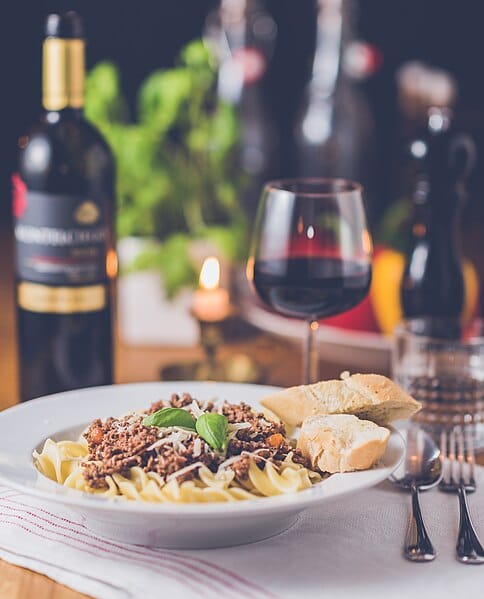
Source: Janko Ferlič thepootphotographer, CC0, via Wikimedia Commons
Pasta is traditionally served as a primo (first course), so ordering it as a side dish disrupts this meal structure. Pasta dishes are substantial and are meant to be enjoyed as a main part of the meal, not as an accompaniment. This approach can unbalance the meal and overshadow other courses.
Italian dining etiquette emphasizes savoring each course in its proper context. Skipping the traditional order might affect your overall dining experience. Many Italian restaurants don’t offer pasta as a side dish, so requesting it this way might lead to confusion or disappointment.
Italian meals are designed to be balanced in terms of flavor and texture. The primi provides a flavorful and satisfying introduction to the meal, setting the stage for the richer and more complex secondi (main courses). Serving pasta as the primi allows it to be appreciated for its taste and texture without being overshadowed by heavier dishes.
Following the traditional meal structure is a sign of respect for Italian dining customs. Italians take pride in their food culture, and adhering to these traditions shows appreciation for their culinary heritage. Deviating from the norm, such as ordering pasta as a side dish, might be seen as a misunderstanding of or disregard for these cultural practices.
Expecting Fast Food Service
Italian dining is typically relaxed and leisurely. Meals are meant to be enjoyed slowly, with time taken to savor each course. This contrasts sharply with the fast-paced service often associated with fast food. Italian restaurants, especially traditional ones, adhere to this slower pace, allowing guests to fully enjoy their food and conversation. Ordering food and expecting fast service can disrupt this cultural norm and lead to disappointment.
Italian restaurants prioritize quality over speed. Dishes are often prepared from scratch using fresh, local ingredients. This dedication to quality requires time and good food cannot always be rushed. Aiming for quick service may result in a less-than-optimal dining experience, as the emphasis on quality is compromised.
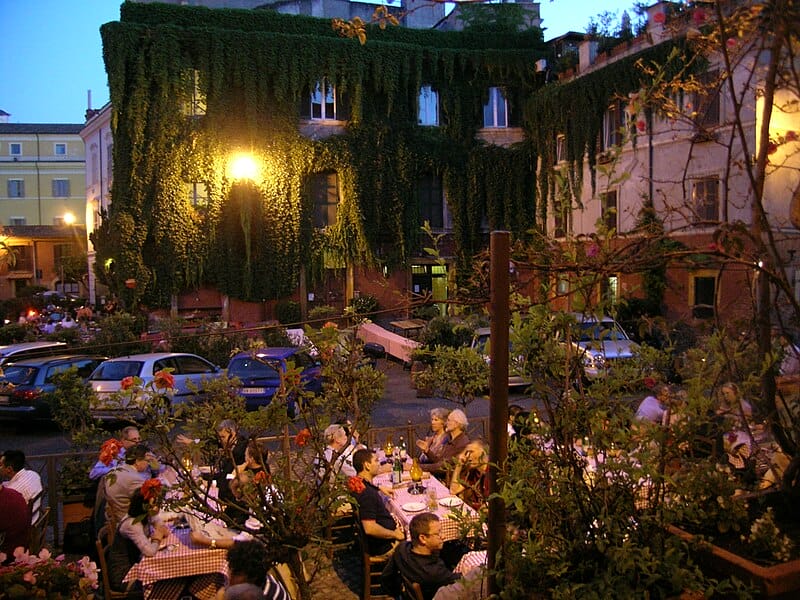
Source: wiccahwang, CC BY 2.0 https://creativecommons.org/licenses/by/2.0, via Wikimedia Commons
Many Roman restaurants, particularly those that offer authentic and traditional Italian cuisine, are not set up for fast food service. These establishments often focus on providing a more refined dining experience, which includes attentive service and a comfortable atmosphere. This setup contrasts with the quick turnaround typical of fast food restaurants.
Understanding and respecting local dining customs is important when traveling. Ordering food and expecting fast food service in a setting where leisurely meals are the norm can be seen as a lack of appreciation for local culture. Embracing the slower pace allows you to fully immerse yourself in the Italian dining experience and shows respect for local traditions.
Not Understanding the Menu Structure
One common problem people face when ordering food is not understanding the menu structure. For example, Italian menus are typically structured into antipasti (appetizers), primi (first courses), secondi (main courses), and dolci (desserts). It is important to follow the traditional structure to enjoy a complete Italian dining experience. Mixing courses or expecting to have everything on one plate is not recommended.
When ordering food, keep in mind that each section of the menu is designed to complement the others. For instance, antipasti are meant to be light starters, setting the stage for more substantial courses like pasta or meat. If you misunderstand the structure and try to order a full meal from one section, such as ordering only secondi (main courses) without considering the primi (pasta or rice dishes), you might end up with an unbalanced meal that lacks the variety and progression typical of Italian dining.
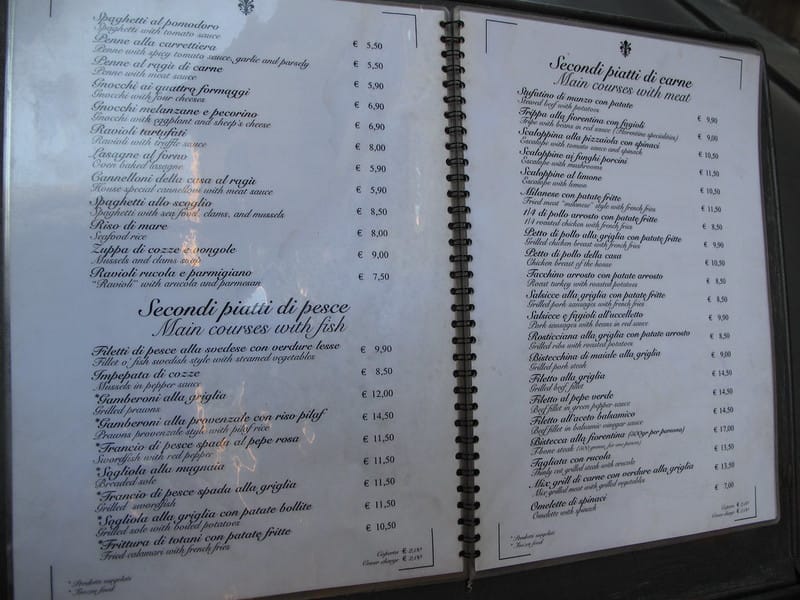
Many Italian restaurants feature regional specialties or seasonal dishes that might not be listed in the typical menu structure. By not understanding the menu, you might miss out on these unique offerings. Asking the waiter for recommendations based on the menu structure can also enhance your dining experience by allowing you to try dishes that are particularly well-prepared or in season.
Misunderstanding the menu can lead to mistakes such as ordering dishes that are not typically served together or expecting certain dishes to be served in the way they are in other countries. For example, ordering a dish labeled as “primi” and expecting it to be a main course can lead to confusion and dissatisfaction.
Overlooking Seasonal and Local Specialties
When ordering food, it is important to consider the seasonal and local specialties that might be available. Roman restaurants often have dishes that are based on the time of year and the local produce that is available. Failing to ask about or order these specialties might mean missing out on some of the most authentic and delicious dishes available.
Local specialties reflect the rich culinary traditions of Rome and its surrounding regions. Dishes like “cacio e pepe” or “saltimbocca alla romana” are examples of traditional recipes that have been perfected over time. By choosing to ignore these dishes, you miss an opportunity to engage with Rome’s food history and culture.
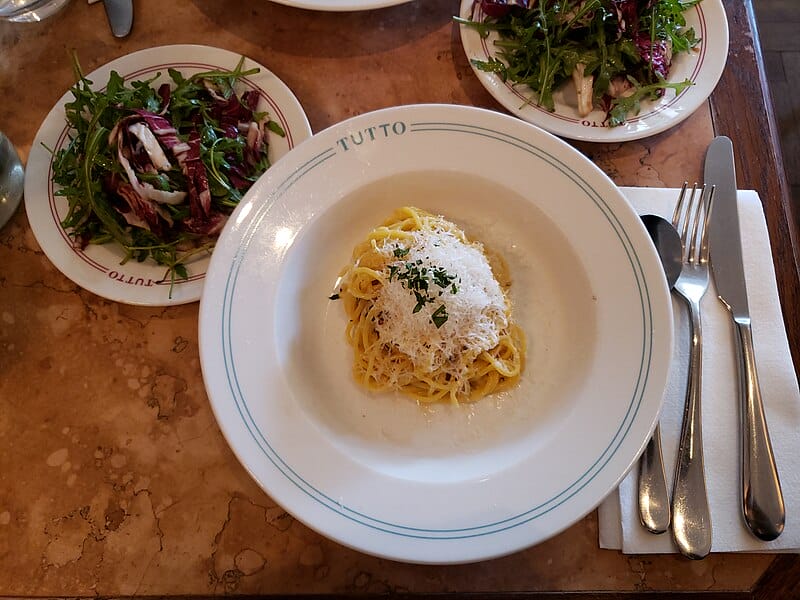
In addition to Roman cuisine, other types of cuisine also have seasonal and local specialties. For example, pizza toppings can vary depending on the region and the time of year. It is also important to consider the type of bread that is available. Many bakeries offer seasonal breads that incorporate local ingredients and flavors. These breads can add an extra layer of flavor to a meal and are often a great way to experience local cuisine.
When it comes to produce, it is important to consider what is in season. Fruits and vegetables that are in season are often fresher and more flavorful than those that are not. In addition, buying produce that is in season can be more cost-effective.
Seasonal ingredients are often more abundant and less expensive than out-of-season produce, which can make seasonal dishes more cost-effective and better value. By ordering these dishes, you get a high-quality meal at a reasonable price.
Ignoring Local Dining Hours
When it comes to ordering food, ignoring local dining hours can have a significant impact on one’s experience. In many cultures, including the Romans, lunch is typically eaten between 1:00 PM and 3:00 PM, and dinner is served from 8:00 PM onwards. Arriving too early or too late may result in finding many places closed or not fully open yet, which can be frustrating for those who are hungry and looking for a quick bite to eat.
Dining according to local hours allows you to experience Rome as the locals do. Italians take their meal times seriously, and part of the cultural experience is enjoying meals at the times when they are traditionally served. Ignoring these hours can mean missing out on this important aspect of Italian life.
Dining during the appropriate hours ensures that you experience the restaurant at its liveliest and most vibrant. Dining too early or too late might result in a less bustling atmosphere, missing out on the lively, social dining environment that many Italian restaurants offer during their peak hours.
Expecting Bread with Every Meal
In many cultures, bread is a staple food item that is expected to be served with every meal. However, this is not the case in all countries. For instance, in Italy, bread is not automatically served with every meal, and one may need to ask for it or order it separately. Moreover, bread may not be free and could be included in the coperto (cover charge). When it comes to ordering food, bread is often a popular item that people expect to be included in their meals. In some cases, bread may be served as a complimentary item, while in other cases, it may need to be ordered separately.
Italian cuisine has specific courses and traditional meal structures. Bread is often served in conjunction with antipasti (appetizers) or alongside main courses but not always as a standard accompaniment throughout the meal. Depending on the type of restaurant, bread may be served at the beginning of the meal or might not be offered at all.
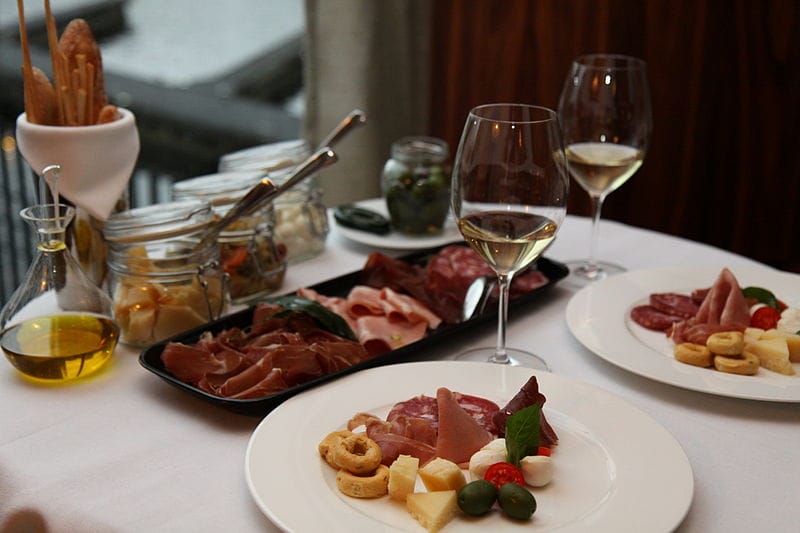
Source: franzconde, CC BY 2.0 https://creativecommons.org/licenses/by/2.0, via Wikimedia Commons
In different regions of Italy, the role of bread in meals can vary. For example, in some parts of Italy, bread may be more commonly served with meals, while in others, it might be less emphasized. In Rome, while bread is enjoyed, it is not always a staple served with every dish.
In Italy, it is often considered polite to focus on the meal being served rather than expecting additional items like bread. By embracing the local dining customs and enjoying the meal as presented, you align better with Italian dining etiquette and enhance your overall experience.
People Also Ask:
What time do you eat dinner in Italy?
Mealtimes can vary slightly, but Italians typically eat lunch between 1 and 2:30 p.m. and dinner between 8:30 and 10:30 p.m. Many restaurants will open for lunch around 12:30 or 1 p.m. and close the kitchen from 2:30 or 3 p.m. until 7 or 7:30 p.m. Restaurants that serve dinner before 7 p.m. are catering to tourists.
How do meals work in Italy?
Italian meals are set up in four stages: antipasti, primi piatti, secondi piatti, and a dolci. You don’t have to eat every single stage – in fact, most people don’t. But it’s very unusual for one to start with a secondi piatti and then order an antipasti.
Is bread free in Italy restaurant?
Yes, you do also have to pay for bread. This is the “pane e coperto” charge — more on what that is in a moment. Yes, you do have to pay for that antipasto or foccacia, even if the waiter offered it rather than you ordering it outright. And yes, you have to pay for that digestivo of limoncello or amaro or grappa.
What is the dining etiquette in Italy?
In Italy, it is common practice to hold the fork in the right hand and the knife in the left without switching hands throughout the meal. Unlike in Australia, where it is typical to switch utensils between hands when cutting food and eating, this standard of utensil etiquette in Italy may be unfamiliar to some.
Do you tip in Italy?
Tipping isn’t the norm in Italy like it may be in North America and some other countries in Europe, but it is still appreciated. Feel free to leave a small amount if the service has been particularly good. In taxis, tipping is not expected, but if rounding up the charge makes life easier, go for it.
Italian menus are broken down into sections, loosely in the order that you’d eat the dishes in. It’s not required to order something from each section on the menu, but on the whole, Italians will usually order more than one dish when eating out for lunch or dinner.
Hello, my name is Vladimir, and I am a part of the Roman-empire writing team.
I am a historian, and history is an integral part of my life.
To be honest, while I was in school, I didn’t like history so how did I end up studying it? Well, for that, I have to thank history-based strategy PC games. Thank you so much, Europa Universalis IV, and thank you, Medieval Total War.
Since games made me fall in love with history, I completed bachelor studies at Filozofski Fakultet Niš, a part of the University of Niš. My bachelor’s thesis was about Julis Caesar. Soon, I completed my master’s studies at the same university.
For years now, I have been working as a teacher in a local elementary school, but my passion for writing isn’t fulfilled, so I decided to pursue that ambition online. There were a few gigs, but most of them were not history-related.
Then I stumbled upon roman-empire.com, and now I am a part of something bigger. No, I am not a part of the ancient Roman Empire but of a creative writing team where I have the freedom to write about whatever I want. Yes, even about Star Wars. Stay tuned for that.
Anyway, I am better at writing about Rome than writing about me. But if you would like to contact me for any reason, you can do it at [email protected]. Except for negative reviews, of course. 😀
Kind regards,
Vladimir
